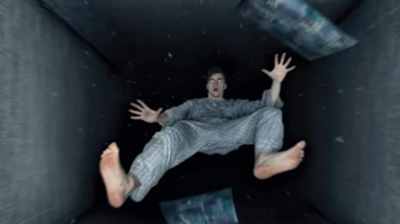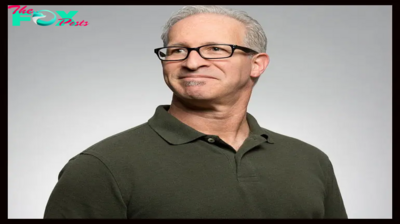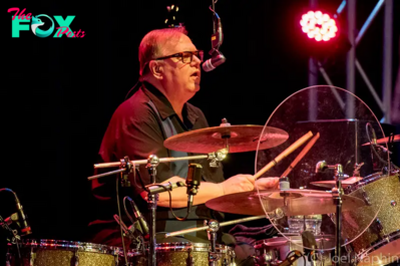Entertainment
AMERICAN THEATRE | Equal Accessibility for Deaf and Listening to Audiences? It’s Attainable!
Sandra Mae Frank and Krissy Lemon in “Cinderella” at Deaf Austin Theatre. (Photograph by Suzanne Cordeiro)
The gorgeous factor about theatre is that there’s by no means only one strategy to do it. Administrators are in a position to take a chunk and stage it in new and inventive methods, whereas holding true to the story and the textual content. As a director who makes a speciality of Deaf theatre, I take a look at every script to seek out methods to extend the accessibility. My objective is all the time to make sure that the present is accessible to each Deaf and listening to audiences, whereas discovering methods to problem the standard theatre norms.
Historically, Deaf theatre has been staged with “shadow” actors or interpreters—i.e., each position is double solid with a Deaf actor and a listening to actor. This technique has been used for a few years. However for my part, it’s fairly oppressive to the Deaf actors. It requires that the Deaf actor share the highlight with a listening to actor who is simply offering the voice, whereas the Deaf actor is performing the embodied position. This technique has usually troubled me, as a result of it sends the message that the Deaf actor’s language, American Signal Language (ASL), isn’t sufficient. Many corporations will say that this bilingual strategy is designed to make the present accessible to everybody. Whereas the logic is sound, the result’s that Deaf audiences must focus more durable on the signing actor, whereas having the visible distraction of the listening to actor. Whereas listening to audiences’ consideration could also be break up as nicely, there may be by no means a hazard that they are going to miss something.
Take Deaf West’s Spring Awakening, for instance. First, some qualifiers: I extremely respect Deaf West and everybody concerned on the present, as most of the Deaf artists concerned are shut private mates. I’m grateful for the present, because it actually helped to place Deaf performers on the map within the trade and led to an consciousness that was wanted, and I applaud the theatrical and Broadway neighborhood for welcoming this model of the present. I used to be fortunate sufficient to see it on its closing night time on Broadway.
All that stated, whereas I used to be thrilled to see Broadway audiences falling in love with my mates and this manufacturing, as a Deaf viewers member, I’ve to say it was not totally accessible to me, because it was designed for a listening to viewers. I’ll admit that I do have the privilege of getting some residual listening to left, and my listening to aids to assist me expertise the music. I noticed the unique Broadway solid years earlier than and fell in love with the story and the music, so I knew the present by coronary heart. This allowed me to notice what was missing by way of accessibility.

Throughout intermission, I noticed one other viewers member I knew from my time as a scholar at Gallaudet College. I knew he was profoundly Deaf, with no residual listening to. I requested him if he was having fun with the present up to now. His face dropped, as he instructed me he couldn’t comply with the story; it was usually arduous to see the signing as a result of lighting design, and the periodic projection of textual content on the set was usually illegible as a consequence of placement and font selection, whereas the fixed twin shadowing of listening to/Deaf casting was distracting.
I’ve met quite a few Deaf individuals who felt the identical means. When I’ve been contacted by theatre corporations that wish to do inclusive reveals within the mode of Spring Awakening, I’ve to clarify the issues with this mannequin, which is entertaining for listening to audiences however inaccessible to many Deaf audiences. It was time for a change. I had been eager to push these boundaries of accessibility and check out one thing new. Enter ZACH Theatre in Austin, with a suggestion to collaborate with my firm, Deaf Austin Theatre, on an ASL/English manufacturing of Rodgers & Hammerstein’s Cinderella, with a brand new e-book by Douglas Carter Beane. We introduced on Michael Baron, creative director of Lyric Theatre of Oklahoma, to co-direct the present with me due to his experiences co-directing with Sandra Mae Frank on a Deaf/listening to model staging of The Music Man at Olney Theatre Heart in 2022.
As a Deaf director myself, I perceive how necessary illustration is, and Michael one hundred pc agreed. So the very first thing that we did was to rigorously choose a manufacturing group that was blended with each Deaf and listening to professionals. The manufacturing group included music director Allen Robertson (listening to), lighting designer Annie Wiegand (Deaf), choreographer Cassie Abate (listening to), assistant choreographer Mervin Primeaux O’Bryant (Deaf), costume designer Jeffrey Meek (listening to), set/projection designer Stephanie Busing (listening to), and a director of ASL, Kailyn Aaron-Lozano (Deaf).
When discussing the storyline and the combination of Deaf tradition, I needed to resolve which characters had been Deaf, which had been listening to, and which had been arduous of listening to. We already knew that Ella was going to be Deaf and Prince Topher was listening to. Jean-Michel, Ella’s buddy, could be Deaf, whereas the Prince’s buddies, Sebastian and Lord Pinkleton, could be listening to and Deaf, respectively. Madame, Ella’s stepmother, could be listening to, whereas stepsister Charlotte could be listening to and stepsister Gabrielle arduous of listening to. These distinctions additionally served the story: Madame, the stepmother, valued speech over every other communication, sharpening her dislike of Ella, who couldn’t hear or communicate, in distinction to her listening to and hard-of-hearing daughter.
In casting the present, we put collectively a gaggle of 15 actors, seven Deaf and eight listening to. Sandra Mae Frank, finest identified for her work on NBC’s New Amsterdam and Deaf West’s Spring Awakening, stepped into the glass slippers as our Ella. To star reverse Sandra Mae as Prince Topher, we discovered Trey Harrington, a listening to actor who had been learning ASL for years; we determined to make the Prince a CODA (baby of deaf adults).
In our staging of Cinderella—which ran at ZACH in early 2023 and is about to reopen at Lyric Theatre of Oklahoma in Oklahoma Metropolis—Michael and I threw out each what’s conventional in musical theatre and what’s conventional in Deaf theatre. We created a manufacturing the place accessibility was a good platform for everybody, regardless in case you had been Deaf, arduous of listening to, listening to, fluent in ASL, or fully ASL illiterate. In contrast to the “shadowing” observe famous above, the Deaf characters Ella and Marie had no vocal counterpart for a lot of the present, together with throughout songs like “My Personal Little Nook” and “There Is Music in You.” The identical was true in reverse for listening to/talking characters like Madame and Sebastian, who had no ASL counterparts. Prince Topher would shift from chatting with signing to SimCom (simultaneous communication: signing and talking on the similar time), relying on who he was with.
How did these numerous audiences comply with every little thing that was occurring? The important thing: Your complete manufacturing would have the English textual content and lyrics projected as supertitles onto the set all through the present, in order that at any level the textual content could be available when wanted.
All through, I strove to make use of Deafness and listening to as a part of the story. I needed to usher in the dynamics of a typical Deaf/listening to relationship, together with all of the hurdles and alternatives that presents. Throughout the Prologue, we set the story in a contemporary library, with an ensemble pantomime that reveals a modern-day Deaf woman bumping right into a listening to boy. He tries to speak along with her however learns from the librarian that she is Deaf, so he finds an ASL dictionary and learns the way to signal, “My identify is…” However when he tries to speak along with her, he loses his nerve and runs off. Dejected, our modern-day Deaf woman dives into her favourite fable: Cinderella. As she opens the e-book, the story involves life and the stage transforms.
Bookending this opening, on the finale we carry again our modern-day couple and see that he’s lastly constructed up the nerve to speak to the attractive Deaf woman and introduce himself, as the ultimate notes of the music sound out, resulting in a conclusion of hope and love for the younger couple.
Signing, Not Singing
To highlight the Deaf actors portraying characters we recognized as Deaf, we needed to honor their genuine language, which meant not including voicing for his or her characters. So throughout Ella’s solo of “My Personal Little Nook,” Sandra Mae Frank indicators the tune together with the music, however no vocals are heard. As a Deaf particular person, the primary time I noticed Sandra Mae signing the tune together with the music, it gave me goosebumps as a result of it was so empowering to see.
This impressed us so as to add extra ASL songs with out voicing, together with songs between Ella and Topher, as a result of it is sensible that he would wish to talk along with her in her personal language. Songs like “Ten Minutes In the past” and “Do I Love You As a result of You’re Stunning” are carried out in ASL, English voicing, and SimCom at moments that align with the development of Ella and Topher’s relationship.
Throughout ensemble songs like “The Prince Is Giving a Ball/Now Is the Time” and group songs like “When You’re Driving Via the Moonlight/A Pretty Evening,” vocals of the lyrics are heard, however the singers are hidden among the many ensemble or offstage in order to not distract from what was occurring. Gabrielle, the hard-of-hearing stepsister, SimComs every time Madame was round, however when it’s simply Ella and Gabrielle, they use ASL solely, solidifying their relationship. This rising sisterhood is much more distinguished within the reprise of “A Pretty Evening.”
This system works the opposite means too: When Prince Topher is talking together with his right-hand man, Sebastian, with no different Deaf characters onstage, they communicate solely. But when Lord Pinkleton is round, the Prince makes use of SimCom in order that Pinkleton is included within the dialog. For Pinkleton’s tune, “The Prince Is Giving a Ball,” Sebastian voices the tune whereas Pinkleton indicators it. The Prince, in the meantime, progresses in his relationship with Ella, from SimCom to full signing with no voice. This corresponds with the pure improvement of a listening to particular person’s relationship with a Deaf particular person.
As Madame is without doubt one of the extra oppressive characters, we needed to make it clear that she doesn’t like signal language and solely values spoken language. This can be a type of audism: i.e., the idea that the power to listen to makes you higher than somebody who can’t. So Madame crudely gestures with Ella and treats her as ignorant. Madame disapproves of Gabrielle’s relationship with Jean-Michel as a result of he’s Deaf and can’t communicate.

Supertitles to the Rescue
Co-director Michael Baron was on board with the objective of full accessibility with the manufacturing, and in addition needed to construct on what realized from his expertise with The Music Man, based mostly on viewers suggestions concerning the location of the supertitles.
Supertitles are captioning projected onto the set and ingrained throughout the set design. Captions, in contrast, should not totally accessible, as a result of they’re usually positioned in obscure places, forcing Deaf viewers members to look away from the stage/present as a way to learn the textual content. We needed to make sure that the supertitles had a central dwelling onstage, whereas additionally being free to maneuver if the scenic motion is occurring stage proper or stage left. Stephanie Busing, our set designer, was fully on board and built-in these surfaces into her design, whereas additionally taking up the position of projection/supertitle designer. This allowed for a streamlined imaginative and prescient of cohesion between the bodily set and the projections.
The supertitles are projected onto a big framed canvas descended from the fly system within the stage heart place. But when Cinderella’s home occurs to maneuver far stage left or proper, the supertitles are projected on the archway representing her home. The objective is to make sure that the textual content and the actors are all throughout the viewers’s visual view always all through the present.
Some individuals have requested me why we now have songs and dialogue with out voicing, and my response to that’s…why not? Why does every little thing must be voiced? If Deaf audiences are all the time having to find out which mode of accessibility they are going to benefit from throughout a present (ASL interpreters or captions), then why can’t listening to audiences additionally adapt? With this staging, everybody has to do a bit of labor, turning to the supertitles when the textual content onstage isn’t accessible to them. No particular person has a bonus over the opposite—except you’re a listening to one who is fluent in ASL. Then you might have the most effective of each worlds.
Actually, whereas I’m very pleased with what we’ve completed with Cinderella, this shouldn’t be a uncommon or big day. Deaf actors ought to be thought of, and supertitles included, in each manufacturing. That means Deaf audiences wouldn’t be restricted to reserving tickets on particular nights, however have the equitable possibility of selecting any night time to attend the present.
This new wave of accessible theatre may be carried out in any venue throughout the U.S. and past. Wish to see how it’s completed? Cinderella is taking part in at Lyric Theatre of Oklahoma Metropolis, July 30-Aug. 4.
Dr. Brian Andrew Cheslik is the managing creative director of Deaf Austin Theatre and this system director for the American Signal Language & Interpretation program on the College of Texas Rio Grande Valley, in addition to a Licensed Deaf Interpreter.
Associated
-

 Entertainment7h ago
Entertainment7h agoBeyonce to Headline Halftime Show During NFL Christmas Game
-

 Entertainment8h ago
Entertainment8h agoDid You Correctly Answer This Poughkeepsie Related Jeopardy Question?
-
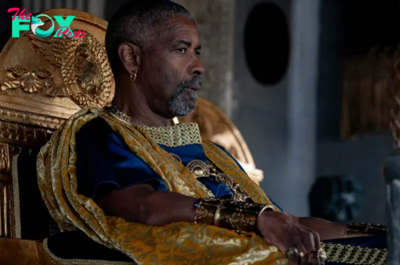
 Entertainment13h ago
Entertainment13h agoWhat to Know About Denzel Washington’s Gladiator II Character
-

 Entertainment14h ago
Entertainment14h agoChanges Made in New York to “Men Working” Construction Signs
-
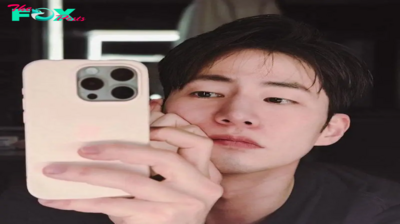
 Entertainment23h ago
Entertainment23h agoRemembering Song Jae-rim: A Look at His Best Movies and K-Drama Performances
-
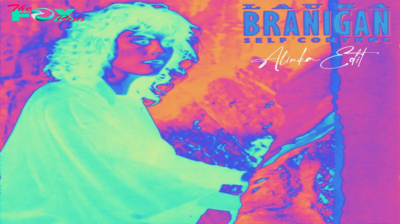
 Entertainment1d ago
Entertainment1d agoAmerica On CoffeeWe’re simply inviting you to take a timeout into the rhythmic ambiance of our breakfast, brunch and/or espresso alternatives. We’re pleased everytime you cease by.SELF CONTROL
-

 Entertainment1d ago
Entertainment1d agoOrange County Choppers Is Ready For Its Big Comeback
-
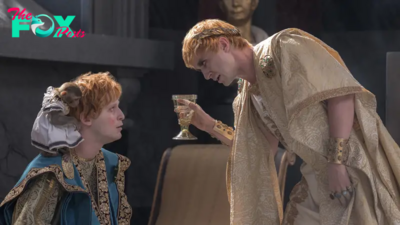
 Entertainment1d ago
Entertainment1d agoThe Real Story of Geta and Caracalla, the Roman Brother Emperors in Gladiator II
